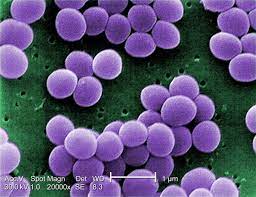
Staphylococcus infection found on skin, not only private parts – Physicians
According to Dr. Chukwuma Anyaike, National Coordinator of the National Tuberculosis, Leprosy, and Buruli Ulcer Control Programme, it is incorrect that staphylococcus aureus, a human pathogen, is exclusively linked to the intimate regions.
He added that staphylococcus may be obtained in hospitals through contaminated things and could also be found on normal human skin.
The public health physician said that several misconceptions exist regarding the way Staphylococcus bacteria spread.
Among the places on human skin that include the nose, armpit, groyne, and other areas is the staphylococcus bacterium type, according to the Association for Professionals in Infection Control and Epidemiology.
According to the body, the most common cause of infections of the skin and soft tissues, including abscesses, boils, furuncles, and cellulitis (red, swollen, painful, warm skin).
More severe infections such pneumonia, bloodstream infections, endocarditis (infection of the heart valves and chambers inside the heart), and infections of the bones and joints can also be brought on by Staphylococcus aureus bacteria.
According to the association, "it is spread by touching infected blood or body fluids, most often by contaminated hands."
According to Anyaike, everyone is susceptible to Staphylococcus.
"Some people think it's an infection that only affects the intimate areas," he said. However, it isn't. Staphylococci can infect people in hospitals through contaminated items. Staphylococcus occasionally enters laboratories as a contaminant.
"Staphylococcus comes as a contaminant because it can occasionally be found on normal skin."
The public health doctor stated that while staphylococcus is occasionally misidentified, it can cause infection when it gets to the wrong place including the private parts.
He asserts that staphylococcus should not be present in the vagina or urethra and warns against doing so because it is an obstinate organism that has developed resistance to popular treatments.
The head of the NTBLCP advised individuals to practise better hygiene and abstain from having several sexual partners, cautioning that staphylococcus infections can occur in persons who are unaware of the source.
"Staphylococcus is not supposed to be in the vagina or urinary tract," the public health expert responded when asked why staphylococcus is also a sexually transmitted infection. Therefore, once it gets there, it is in the incorrect area and, like other organisms like ecoli, can spread sexually.
"Ecoli shouldn't be in the male vagina or intimate area. When staphylococcus is not in its proper location, it will start growing and give symptoms that will make you very uncomfortable.
Thus, what does the term "sexually transmitted" mean? The reason it's in the wrong location is that when you have sex with a man, he will take it from you during the sexual act. After that, he will pick it up and give it to another woman. It is therefore sexually transmitted for that reason.
Numerous things are capable of spreading sexually. An organism becomes sexually transmissible when it is at the improper location (the private area).
Anyaike pointed out that when an infection is sexually transmitted, it indicates that sexual activity is the mechanism of transmission.
"An organism becomes sexually transmitted when it is carried into an area where it is not supposed to be through sexual acts.
Thus, staphylococci can spread through sexual activity. It is not a typical vaginal organism. It's visible on the skin. It is also a typical laboratory contaminant. Staphylococcus can enter the vagina even during foreplay. Thus, you need to practise good hygiene and be well-mannered.
"Normally, staphylococcus shouldn't be found in a woman's vagina or a man's urethra because they are in the wrong places, and if they are, they can cause burning and itching sensations," the man stated.
Anyaike advised those who had been diagnosed with the infection to take their prescriptions exactly as directed by their doctors in order to prevent the organism from developing drug resistance.
According to the US Centres for Disease Control and Prevention, staphylococcus aureus is a kind of bacteria that is present on human skin.
According to the CDC, staphylococcus can cause fatal infections or sepsis if it enters the bloodstream.
According to the CDC, "individuals who undergo surgery, stay in medical facilities, have medical devices inside of them, inject drugs, or come into close contact with someone who has staph are more likely to contract the infection."
A prominent human pathogen that causes a wide range of clinical infections is staphylococcus, according to researchers writing in an article published by the American Society for Microbiology.
They claimed that the prevalence of Staphylococcus is noticeably higher in the HIV-positive group.





